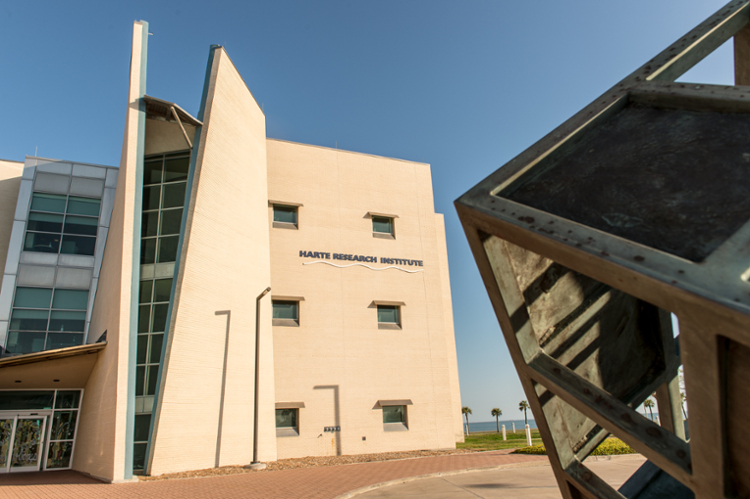Geophysical Test Site Provides New Resource to Students, Researchers at TAMU-CC
CORPUS CHRISTI, Texas – A new Geophysical Test Site (GTS) gives students at Texas A&M University-Corpus Christi an opportunity to employ the latest state-of-the-art techniques of investigating subsurface objects in a rare, hands-on field laboratory.
“The Geophysical Test Site provides an ideal platform that can be used to enhance teaching and research activities in southern Texas,” said Dr. Mohamed Ahmed, Assistant Professor of Geophysics in the College of Science and Engineering. “Field-based exercises enhance students’ engagement and performance because this allows them to learn through active exploration and interaction.”
The GTS was constructed on the university’s Momentum Campus in Corpus Christi from February to March. The construction was partially funded by the Corpus Christi Geological Society. It measures 50 meters by 50 meters and occupies a field near the university’s Thomas J. Henry Tennis Center. Construction consisted of surveying the site to establish any existing subsurface objects, excavation, and the addition of various “target” objects: steel drums, plastic drums, plastic buckets, steel pipes, and well covers.
“The GTS targets were distributed along seven lines and grouped by material type,” Ahmed said. “GTS targets were selected to have magnetic, electric, and electromagnetic responses.”
The targets were buried up to three meters deep.
“These targets were chosen to simulate real-life situations,” Ahmed said. “For example, the steel and plastic drums could represent chemical waste contamination, the steel pipes might represent part of a utility network, such as water, gas, electricity, and telephone, and the well covers represent the heads of regular and/or abandoned wells.”
The new field laboratory was completed on March 4. Classes had just started to begin visiting the site and employing geophysical equipment when the COVID-19 pandemic hit and forced the shutdown.
In the meantime, Ahmed and a team of his graduate students were able to gather details about the project, one of only a handful across the U.S., and submit a paper to the academic journal The Leading Edge, a gateway publication that introduces new geophysical theory, instrumentation, and established practices to scientists in a wide range of geoscience disciplines. The article is accepted, currently in press, and will be published early in 2021.
“Our article provides a thorough description of the site location, subsurface geology, surface topography, and construction methodology, as well as the types, locations, orientations, and depths of the subsurface targets,” Ahmed said. “This article spreads the word about our GTS to the geophysical and geological communities and serves as a reference for the construction of new geophysical test sites worldwide.”
Ahmed is working to ensure the new site is utilized as often as possible by a variety of groups.
“The GTS is currently serving as a field laboratory for Island University geophysics and field geology classes,” Ahmed said. “We plan to add GTS-based exercises to current and future hydrogeology, environmental geology, and environmental and engineering geophysics classes.”
Ahmed is especially excited about the benefits the site can provide for students.
“Students have the opportunity to practically learn principles behind geophysical methods, geophysical responses over known subsurface targets, and how geophysical techniques are integrated and used for different environmental and geotechnical applications,” Ahmed said. “The site will increase students’ knowledge about modern environmental and engineering problems that could be solved using geophysical techniques.”
Students who use the site in undergraduate or graduate work also will have an advantage in the job market.
“The site will enhance the employment prospects for our graduating geology and environmental sciences majors by providing practical experience related to their future professional development as well as facilitating students’ interaction with industry representatives who use the GTS for equipment calibration,” Ahmed said.
The site is especially important due to the growing number of people living in coastal communities that are vulnerable to flooding and hurricanes. Having a geophysical test site helps ensure students and others are properly trained in locating underground utilities and other important infrastructure elements should a flood or hurricane leave debris that otherwise could make that difficult or impossible.
The site also will be open for local and regional organizations to use for research and educational purposes. It will serve as a validation site for various geophysical techniques that are routinely used in geological, geotechnical, and environmental investigations. It could be used to calibrate geophysical equipment over objects with known materials and depths. In addition, the GTS can be used to validate inversion software packages that are used for geophysical investigations.












